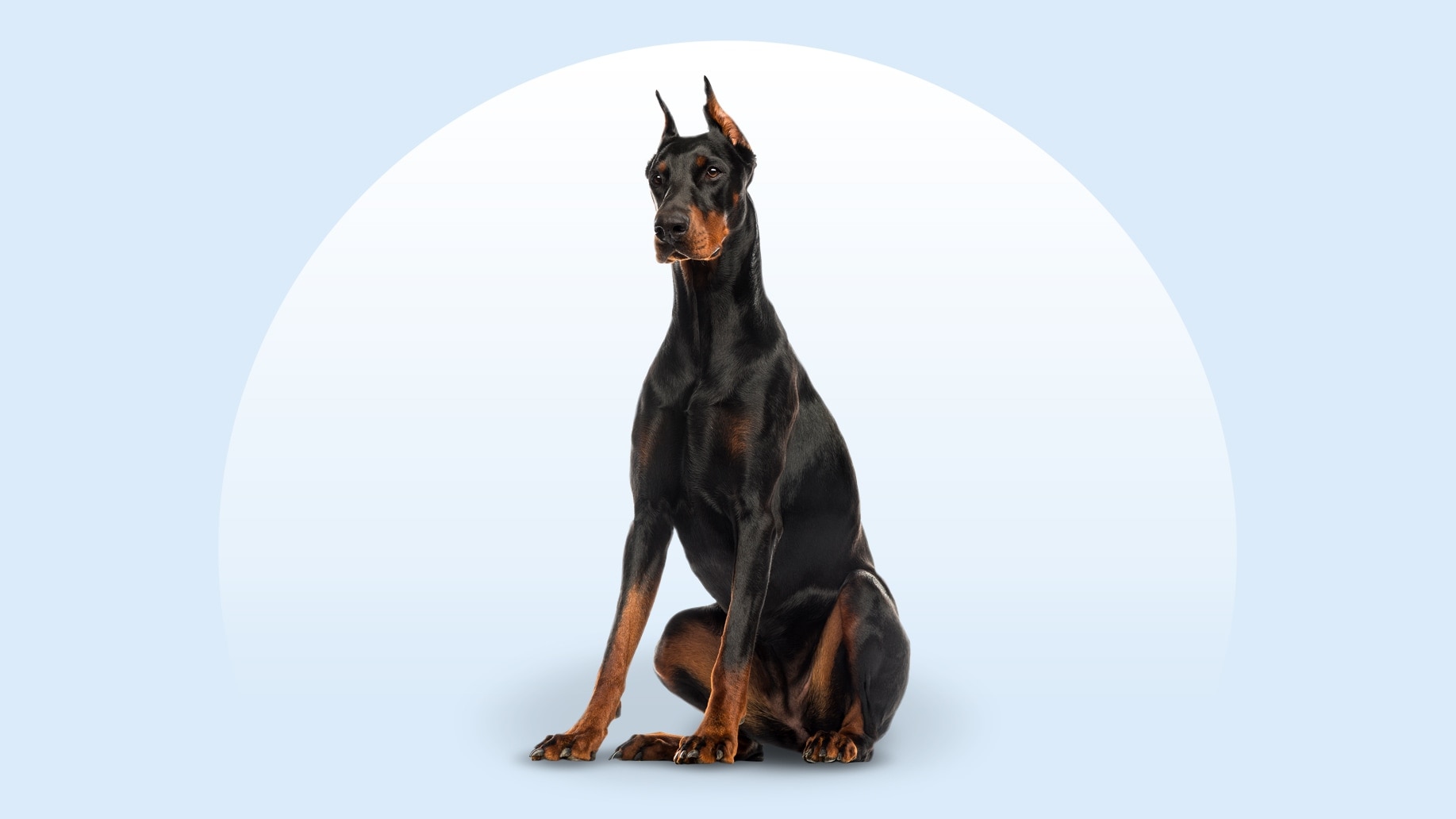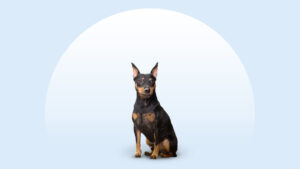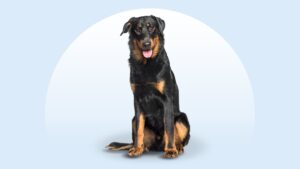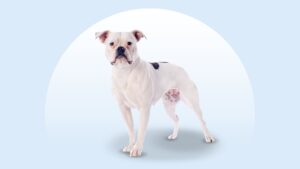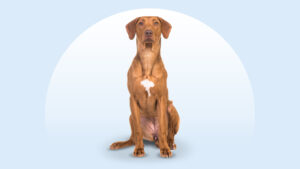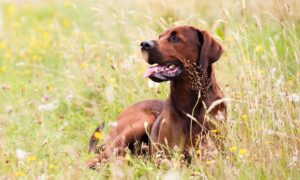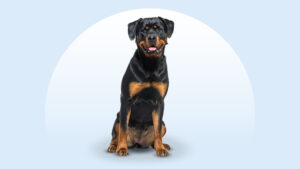Doberman Pinscher
Updated October 3, 2025
Doberman Pinscher
Updated October 3, 2025
Doberman Pinschers are big dogs with gentle souls, and they want nothing more than a family to share their world with. They take their devotion to their person very seriously, so adopting a Doberman Pinscher means adopting a friend—and an invigorating new exercise buddy—for life.
Active, Loyal, Sweet
60–100 pounds
24–28 inches
10–12 years
Black and Rust, Red and Rust, Blue and Rust, Fawn and Rust
If you’ve ever wondered what it would be like to have a 100-pound dog try to sit on your lap, meet the Doberman Pinscher. This loyal pup just wants to be with their family, and if they’re under the impression that they’re the size of a Pomeranian, let’s just consider it a cute side effect.
Though they were originally bred to work, many Doberman Pinschers are fun-loving family dogs with an up-for-anything personality (especially if it’s a run around the neighborhood).
Doberman Pinscher Characteristics
Doberman Pinscher Appearance
Dobermans are proud and graceful, but they’ll turn into a big baby when they’re with their best friend (that’s you). Most commonly, they’re black with rust-colored markings, but they can have fawn, red, and blue fur as well. Their gaze is often confident and attentive.
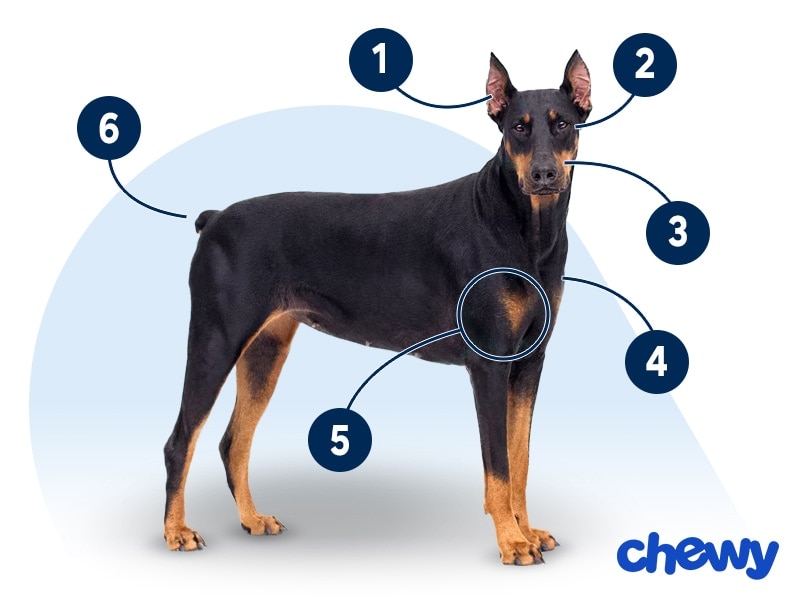
- Ears
Historically, Doberman Pinschers often have their ears cropped to stand erect. But today you’re just as likely to see Dobermans with their natural, folded-over ears. Many groups, including the American Veterinary Medical Association, oppose ear cropping, and many countries as well as U.S. states have banned the practice.
- Eyes
Their almond-shaped eyes are brown.
- Nose
The Doberman nose can be black, brown, gray, or tan, depending on their coat color. Their muzzle shape is long and narrow.
- Coat Length
The Doberman coat is smooth and short.
- Coat Color
They’re usually black and rust, but other colors of a Doberman Pinscher include blue, fawn, or red, all with rust markings.
- Tail
Just like with their cropped ears, some Dobermans have their tail docked to be just a few inches long. But you can also see Doberman Pinchers with tails intact; they’re long, slender, and curved. Many groups, including the American Veterinary Medical Association, oppose tail docking, and many countries as well as U.S. states have banned the practice.
Doberman Pinscher Temperament
Dobermans are highly intelligent dogs, athletic and alert—all things that make them great four-legged employees. This breed was originally bred as a guardian, and Doberman Pinschers still work as military and police dogs today.
And Dobies take their job—whether it’s as a formal search-and-rescue dog or as an agility competitor—very seriously. Their drive means that Dobermans are a better fit for experienced dog parents who have experience with high-energy breeds.
But in the right family, the Doberman Pinscher temperament makes them a devoted family dog. They bond so deeply with their people, in fact, that they’re often referred to as Velcro dogs.
How to Care for a Doberman Pinscher
Doberman Pinscher dogs will form a tight bond with you—you’ll be spending a lot of time together exercising and training together, after all. Grooming, however, is usually a cinch.
Grooming
Training
Diet
Exercise
Environment
Doberman Pinscher Health
The typical Doberman Pinscher lifespan is 10–12 years. Here are some health issues to be aware of.
- Bloat and gastric dilatation-volvulus (GDV): Bloat occurs when the stomach becomes distended with air and/or food. Gastric dilatation-volvulus (GDV) is a serious complication of bloat, when the stomach twists on itself and cuts off blood supply to abdominal organs. Symptoms include abdominal distension, restlessness, and dry heaving. If you notice these signs, go to the vet immediately.
- Dilated cardiomyopathy: Dilated cardiomyopathy is a genetic condition where the heart enlarges and doesn’t pump blood normally; it results in heart failure if not treated early. Diagnosis is based on an echocardiogram and treatment is often daily medication.
- Hip dysplasia: Hip dysplasia is when the ball and socket of the hip and thigh bones doesn’t properly fit, eventually leading to arthritis and pain. Treatment depends on severity.
- Hypothyroidism: Hypothyroidism includes symptoms like lethargy, hair loss, skin infections, ear infections, and weight gain. It’s treated with daily medication.
- Progressive retinal atrophy (PRA): PRA leads to blindness in dogs. There’s no cure, but pups who lose their eyesight tend to adapt well and can still live full, happy lives.
- Von Willebrand disease: Von Willebrand disease is a bleeding disorder where the blood doesn’t clot properly. It’s common in Doberman Pinschers and there is no cure, so your vet may recommend lifestyle changes to reduce the risk of injuries.
- Wobbler syndrome: Wobbler syndrome is a neurologic condition in dogs, also known as cervical spondylomyelopathy. It’s a painful disease of the neck vertebrae that affects the spinal cord and can lead to wobbly walking. It may be linked to nutrition, so be sure to ask your vet about a high-quality, large-breed puppy food and when to transition to adult food.
Doberman Pinscher History
In 19th century Germany, a tax collector named Louis Dobermann longed for a dog who was bright, loyal, and strong. He decided he would create his own breed, and the Doberman was born.
It’s said that the Doberman’s ancestors include many other dog breeds: the Greyhound, the Manchester Terrier, the now-extinct Old German Shepherd, and the German Pinscher, according to the Doberman Pinscher Club of America. Through these ancestors, Dobermans are related to the Weimaraner and the Rottweiler.
By the early 1900s, the Doberman had arrived in the U.S., and the American Kennel Club recognized the breed in 1908. Over a hundred years later, they’re still a popular family dog.
Doberman Pinscher puppies tend to cost between $1,500–$3,000. If you choose this route, pick a responsible breeder.
You can also adopt a Doberman Pinscher, as there are many patiently waiting for forever families. Look for a local rescue like Doberman Rescue Unlimited, keep an eye out at your local shelter, or search Chewy’s database of adoptable dogs in your area.
